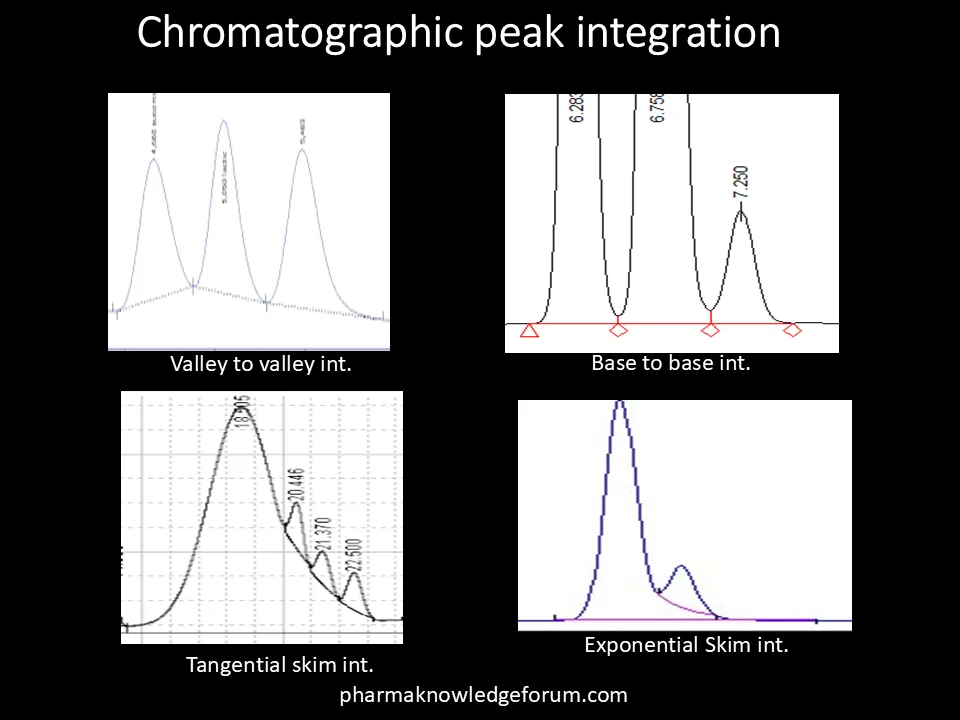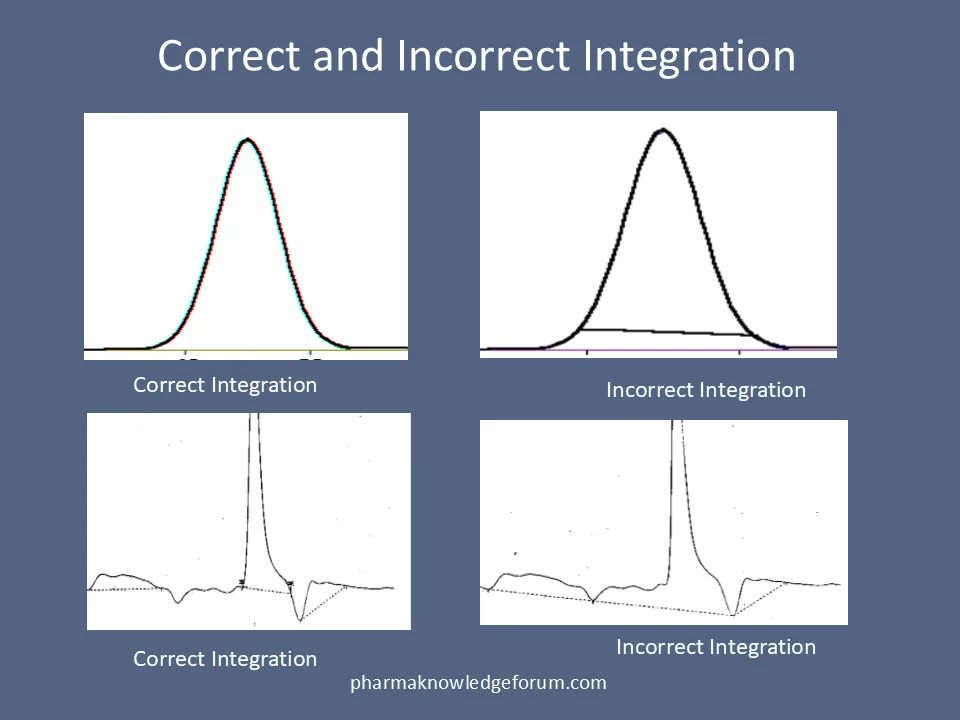Chromatographic Peak Integration: How to Avoid Common Error
Introduction and Outcome
Chromatographic Peak Integration plays an important role in pharmaceutical analysis. A small mistake can have a huge impact on pharmaceutical analysis. When peaks are symmetrical and well separated from the adjacent peaks, then there is not no problem in the integration but when peaks are unsymmetrical and there is no separation between the adjacent peaks then the problem arises in doing the integration. That’s why I decided to share my skill-based knowledge on this topic. In this article, you will learn chromatographic integration, peak integration types, factors affecting integration, common interrelation error, approaches to avoid integration error and FAQS
Integration
The process of calculating the area of a peak in a chromatogram is called peak integration, taking into account width, height and retention time is called integration.

The integration may be performed in the following modes:
- Manual ingratiation: Manual integration is the user dependent and it is recommended in special case with proper justification
- Autointegration: Auto integration is widely used in industries and it is performed by the system
Peak recognition parameters
The following parameters play a lot in peak integration:
- Peak start and peak end point selection
- Noise threshold
- Area threshold
- Baseline drift
Chromatographic peak integration procedures
The following integrations are widely used in the the pharmaceutical analysis:
- Drop perpendicular
- Valley to Valley integration
- Tangential Skim
- Exponential Skim
The following type of integrations are widely used in the in the chromatographic analysis:
Drop perpendicular: In this integration, a vertical line is drawn between the start and stop points of the peak. (see figure-2)
Valley to Valley integration: In this integration the peak valley is considered as the start and end point. This integration is performed only where there is no base-to-base separation between the two peaks (see figure-2)
Tangential Skim: In some cases, small unresolved peaks elute on the shoulder of the the main peak. The main peak is called the parent peak and the smaller peak is called the child peak shoulder peak. During integration, a tangent line is drawn to skim the unresolved child peak from the parent peak. In this case, the area under the skimmed peak (child peak) is added to the parent peak and not to the skimmed peak (see Figure 2)
Exponential Skim: During integration, a curvature is created to skim the unresolved child peak from the parent peak. (see figure-2)

Can base to base integration be possible everywhere?
No
Factor affecting integration
The following factors may affect the integration:
- Noise interference
- Peak shape
- Tailing factors
- Resolution
- Theoretical plate
Proactive approaches to avoid integration error
Ideally, their peak should be symmetrical and there should be base-to-base separation between the adjacent peaks to avoid any error. But it is not possible in all cases. To avoid ingratiation error, proactive approaches should be applied at the method development stage
New method: Develop the method in such a way that there should be bases to base separation between the adjacent peaks and the peak should be sharp and symmetrical. The detail procedure of ingratiation must be mentioned in the method
Existing method: The detailed procedure with proper justification must be mentioned should be mentioned in the method
Common Integration error: Correct and incorrect integration
The following figure 3 explains the correct and incorrect integrations:

Conclusion
I hope this article has helped you understand Chromatographic peak integration and its importance. Now you can avoid common errors related to integration in day-to-day analysis. You may also want to check out other articles on my blog, such as HPLC Detectors and How to decide system suitability test?
If you found this article helpful, then please subscribe to our blog and also write your comments. You can also follow me on Linkedin and Youtube.


